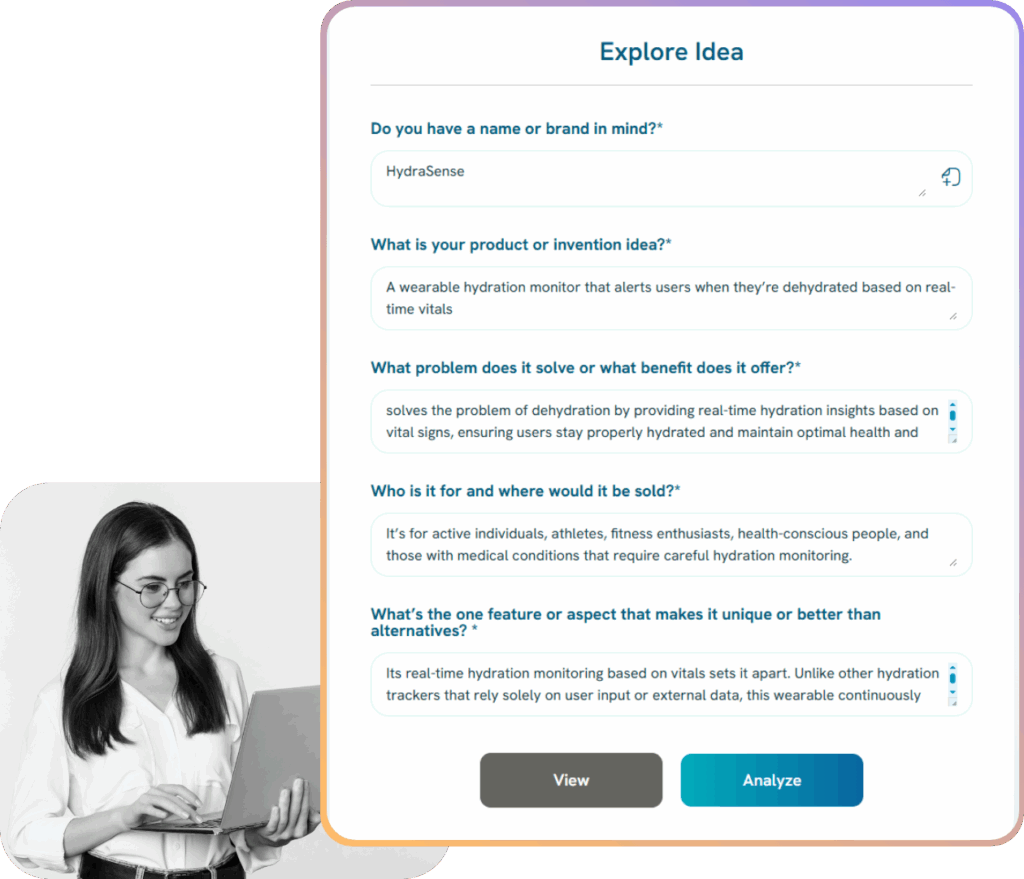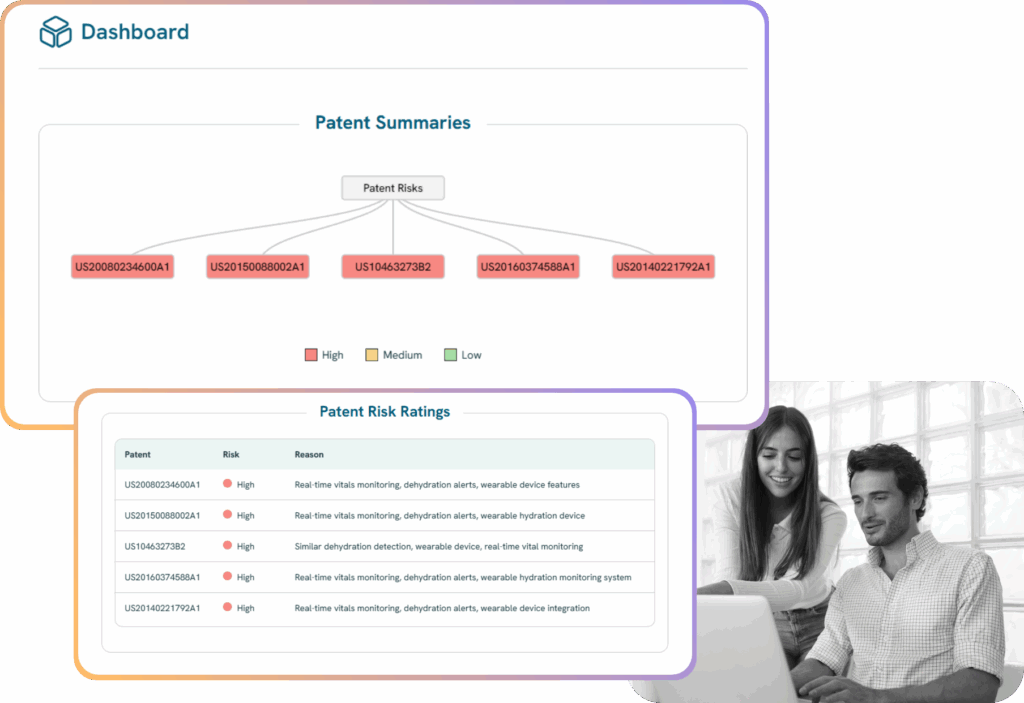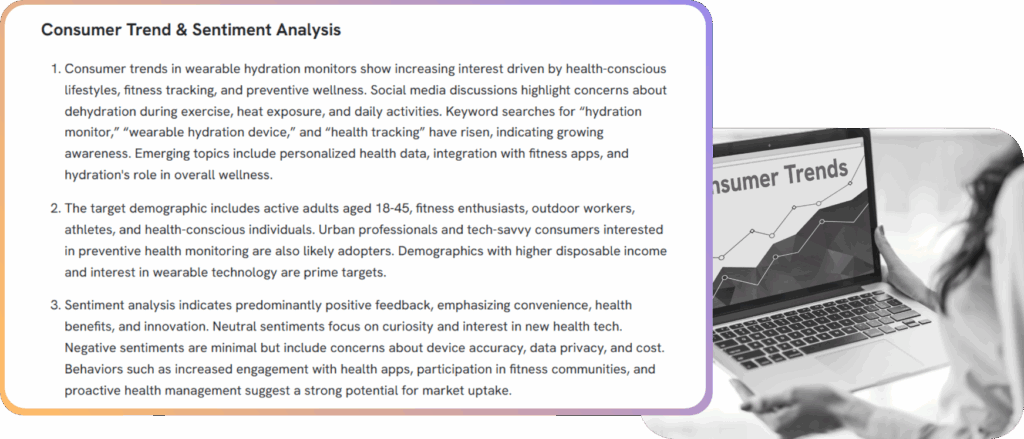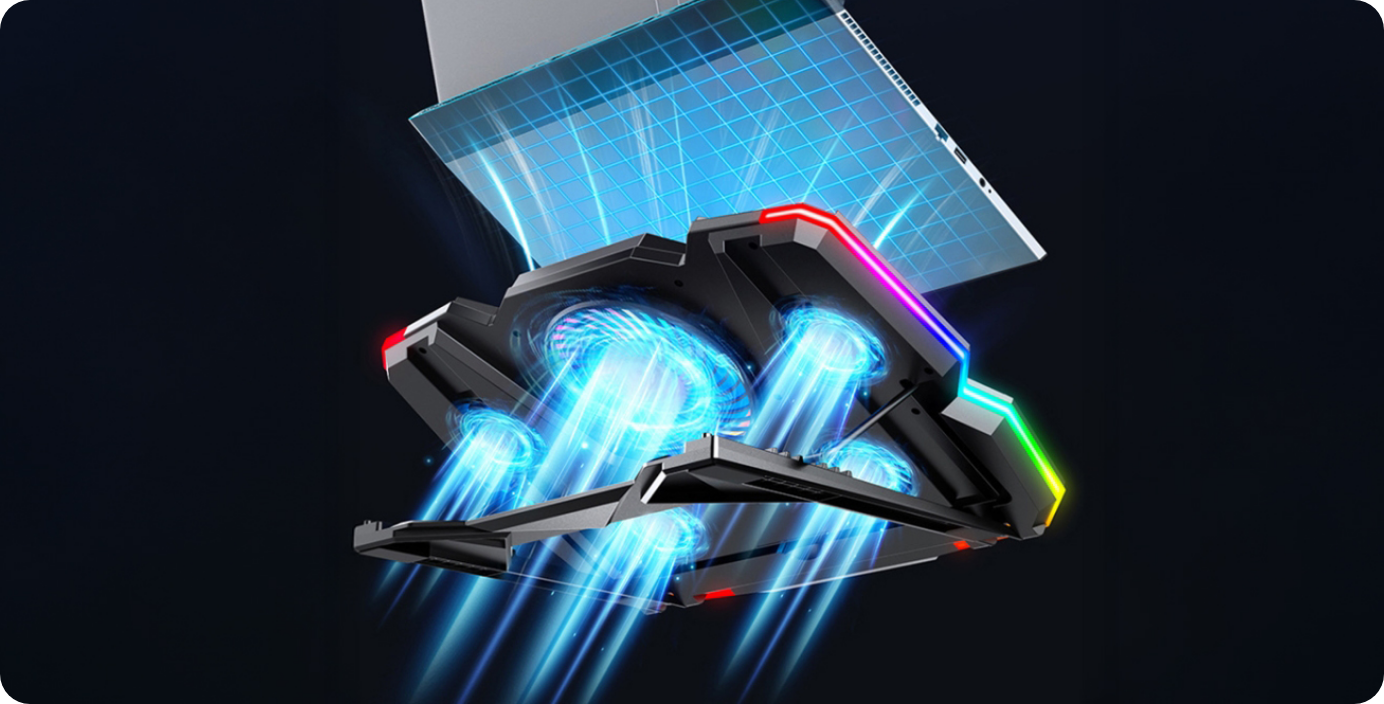The Situation
Meet Aarushi — a third-year engineering student exploring wearable tech in a classroom project. Her idea?
A wearable hydration monitor that uses biosignals to alert users when they’re dehydrated. It was just a project—until her professor said:
“This might actually be worth building for real… but have you checked if it already exists?”
That’s when the questions began:
- Is this idea already patented?
- Can I use the name I came up with?
- Is there a market for this beyond college?
- What regulations would I even need to know about?
Aarushi had passion and potential—but not a roadmap.
Enter InventaIQ.
The Solution: A 15-Minute Analysis with InventaIQ
With just one analysis, Aarushi instantly unlocked:
- A global patent check for similar inventions
- A trademark risk analysis for her chosen product name
- A full market viability analysis
- A view into regulatory classifications and approval pathways
- A clear, personalized next-steps roadmap

What the Analysis Might Reveal
Patent Analysis

- Found 5 overlapping patents related to hydration tracking
- Biosignal-based analysis still offers a novel path to claim
Trademark Check

- “HydraSense” had moderate conflict
- InventaIQ suggested safe alternatives like HydroVigil and AquaSense
Market Viability

- Segment growing at 18% CAGR; expected to hit $1B by 2028
- Top use cases: fitness, outdoor activities, and wellness tracking
Consumer Trends

- Positive sentiment from age group 18–45
- Trending among fitness enthusiasts, hikers, and health-conscious professionals
Regulatory Challenges

- May fall under FDA Class I wellness device
- Global sales may require CE marking for EU markets
Smart Next Steps (Suggested by InventaIQ)
- File a provisional patent focused on biosignal integration
- Choose a trademark-clear brand name
- Explore wearable startup partnerships for faster MVP development
- Create a pitch deck using validation-backed data
- Apply for student innovation grants with confidence
Strategic Outcomes (Realistic for Any Student)
If Aarushi followed these steps, she could:
- File a patent through her university IP cell
- Rebrand with a conflict-free, ownable product name
- Win funding through a college innovation pitch
- Share validated insights with potential startup partners
Why It Matters
Aarushi didn’t just complete an assignment—she discovered an innovation pathway.
With InventaIQ, students can turn ideas into IP, and coursework into commercial potential.
How It Might Feel
“Instead of guessing my next move, I had a plan. InventaIQ showed me what was possible—and gave me the clarity to take my idea seriously.”
(A reflection of how student innovators might feel after their first validation analysis.)



